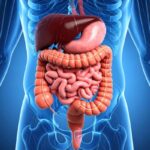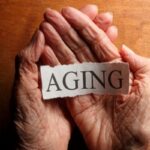The most common form of cancer in Singapore is breast cancer. The Singapore Cancer Society estimates that nearly 1 in 16 women will be diagnosed with breast carcinoma each year. Breast cancer is also a major cause of death from cancer.
Breast cancer is most common in women aged 40-69, although it can also affect younger women without any known risk factors. All women over 30 years old should have a monthly breast self-examination to detect any abnormalities in their breasts. Mammogram screenings should be done annually starting at 40. They can detect breast cancer early, before symptoms can become severe.
There is no need for panic if you find a lump in your breasts during breast self-examination. Most breast lumps are benign and non-cancerous. To be safe, consult a breast specialist to have a screening mammogram done.
Parkway Radiology Consultant Radiologist Dr Patrick Teo answers common questions regarding breast lumps and gives tips about what to expect when visiting the doctor.
My breasts feel lumpy. Does that sound normal?
Your breasts are just like everyone else’s personalities. Some women are born with lumpy breasts. Breastfeeding and hormonal changes can also affect the appearance and feel of your breasts.
It is important to self-examine every month your breasts. You should do this within 7-10 days of your period. This will allow you to look for unusual changes in breasts. These are some warning signs that could indicate breast cancer.
- Lump(s), swelling, or thickening of the breasts or underarms
- Changes in breast size or shape
- Rosacea on the breasts or nipples.
- Bleeding or unusual discharges from the nipple
- Any lymph nodes that are larger than normal in the collarbone and armpit areas
- It feels like a small lump in my breast, but it isn’t painful. Do I wait to see if it gets better?
Breast lumps can be caused by many things. Most of them are benign and can be caused either by tissue growth (like fibriomas) or fluid buildup (like cysts). However, a cancerous lump may present as a painful lump. If you discover any lumps in the breast, it is a good idea to schedule an appointment with your doctor.
How do I know if my breast lump is cancerous or not?
Imaging tests such as a mammogram and breast ultrasound are the only way to determine if there is a problem. Your doctor will determine if further investigation and biopsy are necessary if a breast abnormality has been found.
Mammograms are all I have heard about. Is there another option for breast screening?
Because mammography is the gold standard in breast cancer screening, it is often heard most. Doctors also use other screening tests to detect breast cancer.
Tomosynthesis (3D Mammography – 3D Mammograms are special mammograms that use X-ray images to create 3D images of the breasts. For women with dense breasts, this may be combined with standard 2D Mammograms to increase the cancer detection rate.
Breast Ultrasound – Breast ultrasound can be performed alongside standard 2D mammograms. This is done if the woman feels dense breasts, has a lump, feels nipple, or if abnormalities are found in screening mammograms.
Breast MRI – Magnetic resonance imaging is a specialized examination that isn’t performed with ionising radiation. Your doctor will decide if a breast MRI is necessary.
The Mount Elizabeth Breast Care Centre staff will be able recommend the right procedures and share more information.
What should I expect from the breast-checking centre?
Our Breast Care Centre is committed to privacy. You can expect to wait in the private waiting area for females after you register. Before you proceed to the mammogram imaging area, some questions will be asked about your health.
Before you can go to the mammogram machine, you will need to remove your clothes from the waist. For a few seconds, the machine will gently compress your breasts between two plates. This is done to allow for good images of the breasts to be taken. Each breast will receive two X-rays – one from the top and one from each side.
After 3 working days, your mammogram results are ready for collection. You can schedule an appointment with one of our doctors if you notice any abnormalities.
What happens if my mammogram results show abnormalities?
Your doctor may recommend a biopsy to determine if there is any abnormality in your mammogram. A biopsy is a medical procedure that involves taking a sample of fluid or tissue from your breast to be tested for cancer in the laboratory. The laboratory results will be confirmed within a few days or weeks.
The results that are negative mean there is no evidence of breast cancer. Your doctor will tell you if you require additional follow-up or when your next screening should be.
If the biopsy results show cancerous cells, the specialist breast surgeon will refer you to the appropriate treatment plan.
Regular mammogram screenings can help protect your health. Breast lumps can be a sign of breast cancer. However, they are not always easily detected or noticed by the touch, particularly in the early stages or pre-cancer. Many women who are diagnosed with breast cancer have no symptoms and were only diagnosed when abnormalities in their mammograms revealed them.
Early treatment can make a huge difference in your recovery and treatment from breast cancer. Breast cancer patients are most often diagnosed at stage 1, and have a very good prognosis.
A dedicated breast care center that provides all-in-one services (from mammogram screenings to specialist treatment and consultations) can be a great resource for you and your family. If you notice any changes in your breasts, or have questions about your breast health, don’t hesitate to consult a doctor.




